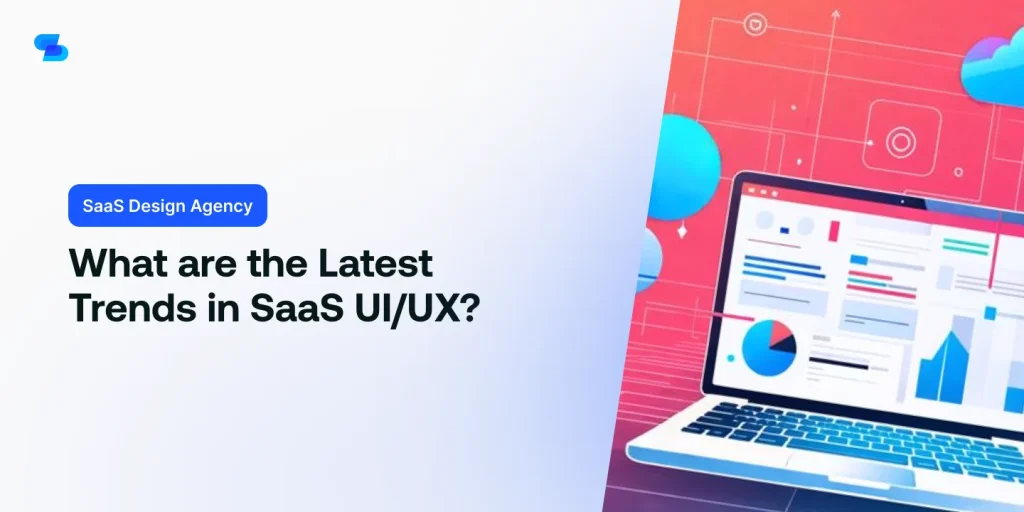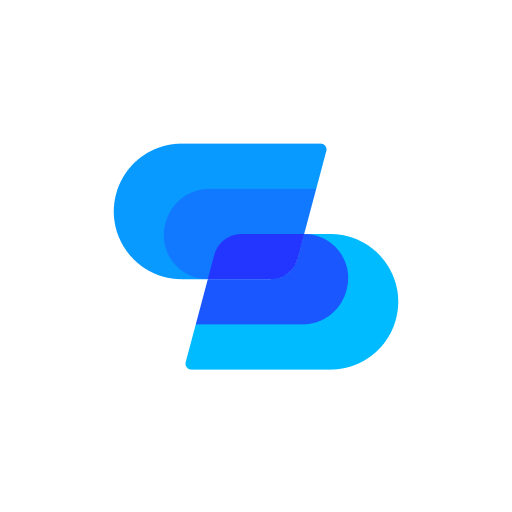You’re stepping into a world where SaaS UI/UX is evolving at breakneck speed. Dark mode’s not just a fad; it’s a game-changer for eye health and energy savings. AI’s personalizing your experience, while voice interfaces are making typing obsolete. Minimalism reigns supreme, stripping away the clutter and leaving only what matters. But it’s not all about looks – accessibility’s taking center stage, ensuring everyone’s invited to the party. And those subtle microinteractions? They’re the secret sauce that keeps you coming back for more. Buckle up; there’s a lot more to unpack in this design revolution.
Dark Mode and Color Schemes
In the domain of SaaS design, dark mode isn’t just a trend—it’s a game-changer for user experience and energy efficiency. You’ll find more SaaS platforms embracing this aesthetic, offering users a sleek, eye-friendly alternative to traditional bright interfaces. It’s not just about looking cool; dark mode reduces eye strain during prolonged use and can greatly extend battery life on mobile devices.
But don’t think dark mode is your only option. Color schemes are evolving beyond the binary light/dark choice. You’re now seeing adaptive color palettes that shift based on time of day or user activity. Imagine your project management tool shifting from energizing hues in the morning to calming tones as you wind down your workday.
Accessibility is driving color innovation too. High-contrast modes and customizable color filters are becoming standard, ensuring your SaaS is usable for those with visual impairments. And let’s not forget about emotional design—color psychology is being leveraged to influence user mood and behavior subtly.
The future of SaaS UI/UX isn’t black and white—it’s a spectrum of thoughtful, adaptive, and inclusive color choices that enhance usability and user satisfaction.
Microinteractions and Animations
You’ve seen them, but you mightn’t have noticed. Microinteractions and animations are the subtle digital whispers that guide your every click and swipe.
These tiny, often overlooked design elements are the secret sauce that keeps you hooked on your favorite SaaS platforms, providing visual feedback and making interfaces feel alive and responsive.
Enhancing User Engagement
Microinteractions and animations aren’t just flashy gimmicks; they’re the secret sauce that keeps users glued to your SaaS platform. These subtle yet powerful design elements transform mundane tasks into delightful experiences, nudging users to stick around and explore.
Think of microinteractions as digital high-fives. They respond to user actions, providing instant feedback that screams, ‘Hey, we’re listening!’ A subtle button color change, a playful loading animation, or a satisfying ‘swoosh’ sound when completing a task – these seemingly insignificant details make your platform feel alive and responsive.
Animations, meanwhile, are your UI’s tour guides. They direct attention, explain complex processes, and smooth out jarring shifts. Use them wisely, though. Overdo it, and you’ll turn your sleek SaaS into a circus.
The key? Purposeful design. Every interaction should serve a function, not just look pretty. Aim for that sweet spot where form meets function, and you’ll create a UI that users can’t resist coming back to.
Subtle Visual Cues
Beneath the surface of your SaaS UI, subtle visual cues are the puppet masters, pulling users’ strings and directing their journey. These microinteractions and animations aren’t just eye candy; they’re the silent conductors of user behavior.
Think of a pulsing button, beckoning for a click. Or a progress bar that crawls forward, keeping users hooked. These aren’t accidents; they’re calculated moves in the UI chess game. You’re not just designing; you’re choreographing a digital dance.
Hover effects whisper ‘I’m clickable’ without screaming it. Skeleton screens tease content, building anticipation. Subtle changes between pages create a seamless flow, like turning pages in a well-crafted novel. It’s all about creating a rhythm, a visual melody that users subconsciously follow.
But beware the overkill. Too many animations can turn your sleek UI into a circus. The key? Restraint. Use these cues strategically, like secret ingredients in a master chef’s recipe. They should enhance, not overwhelm.
AI-Powered Personalization
AI’s seductive whisper: Your SaaS interface now knows you better than your spouse. It’s not just tracking your clicks; it’s reading your mind. Welcome to the era of AI-powered personalization, where your software morphs to match your whims.
Gone are the days of one-size-fits-all interfaces. Now, your dashboard rearranges itself based on your usage patterns. Frequently used features bubble to the top, while rarely touched buttons slink away. Color schemes shift to match your mood, detected through your typing speed and mouse movements.
AI doesn’t stop at layout. It predicts your next move, serving up suggestions before you even know what you want. It’s like having a digital butler, anticipating your needs with uncanny accuracy.
But there’s a dark side to this personalized utopia. As AI learns your habits, it creates a comfort bubble that’s hard to escape. You might miss out on new features or alternative workflows, trapped in an echo chamber of your own making.
The key? Strike a balance. Embrace AI’s insights, but don’t let it cage your creativity. After all, sometimes the most innovative ideas come from coloring outside the lines.
Voice User Interfaces
You’re about to witness a revolution in SaaS interfaces.
Voice UIs, powered by cutting-edge Natural Language Processing, are transforming how you interact with software.
These systems aren’t just talking back; they’re learning your habits, blending with visual interfaces, and crafting a personalized vocal experience that’s uniquely yours.
Natural Language Processing Advancements
Voice interfaces are revolutionizing SaaS UI/UX, transforming how you interact with software through natural speech patterns. Natural Language Processing (NLP) advancements are the driving force behind this shift, enabling machines to understand and respond to human language with unprecedented accuracy.
You’re now entering an era where typing commands feels archaic. NLP-powered SaaS products can interpret context, sentiment, and intent, making interactions more intuitive and effortless. Imagine debugging code by simply describing the issue or generating reports through casual conversation.
These advancements aren’t just about convenience; they’re democratizing software access. Users with limited typing skills or visual impairments can now harness powerful tools effortlessly. NLP is breaking down language barriers too, offering real-time translation in multilingual teams.
But it’s not all rosy. Privacy concerns loom large as your voice becomes your identity. And let’s face it, talking to your computer in an open office might raise eyebrows.
As NLP evolves, expect more personalized, context-aware SaaS experiences. Your software will anticipate needs, learn your jargon, and adapt to your working style. The future of SaaS UI/UX is conversational, and it’s speaking your language.
Multi-Modal Interaction Capabilities
Buckle up for a sensory rollercoaster as SaaS interfaces evolve beyond mere voice, embracing a symphony of interaction methods that’ll make your fingertips tingle and your eyeballs pop.
Multi-modal interaction is revolutionizing how you engage with software, blending voice, touch, gesture, and even eye-tracking into a seamless dance of human-computer symbiosis.
Imagine barking orders at your CRM while simultaneously flicking through data visualizations with a wave of your hand. Or picture yourself maneuvering through complex workflows by simply glancing at different screen sections. These aren’t sci-fi fantasies; they’re the cutting edge of SaaS UI/UX.
Voice interfaces are getting smarter, understanding context and emotion. Gesture recognition is becoming more nuanced, capable of interpreting subtle movements. Eye-tracking tech is so precise it can predict your next move before you make it. And haptic feedback? It’s adding a whole new dimension to your digital interactions.
This multi-modal approach isn’t just flashy tech for tech’s sake. It’s about creating more intuitive, efficient, and accessible interfaces that adapt to your preferences and abilities.
Welcome to the future of SaaS, where your entire body becomes the interface.
Personalized Voice Experiences
Siri’s got nothing on the new breed of SaaS voice interfaces that’ll make you feel like you’re chatting with a mind-reading bestie. These AI-powered vocal assistants are revolutionizing how you interact with software, learning your quirks and preferences faster than you can say ‘Hey Google.’
Imagine a voice UI that recognizes your mood, adjusts its tone accordingly, and even throws in inside jokes you’ve shared before. That’s the level of personalization we’re talking about. These systems will remember your past interactions, anticipate your needs, and offer tailored suggestions that’ll make you wonder if they’ve tapped into your subconscious.
But it’s not just about chitchat. These voice interfaces are getting scary good at complex tasks. Need to crunch numbers for a report? Just dictate your requirements, and watch as the AI whips up a spreadsheet faster than you can open Excel.
Want to brainstorm ideas? Your voice assistant will riff with you, offering creative suggestions that’ll make your human colleagues jealous. Welcome to the era where your software doesn’t just listen – it understands, adapts, and evolves with you.
Minimalist Design Principles
Three pillars define minimalist design in SaaS: simplicity, functionality, and elegance. Embrace these principles, and you’ll revolutionize your user interface. Strip away the unnecessary, leaving only what’s essential. Your users will thank you.
Simplicity isn’t just about white space. It’s about intuitive navigation and clear hierarchies. Don’t make users think. Guide them effortlessly through your software. Ditch the clutter, and watch engagement soar.
Functionality trumps aesthetics. Every element must serve a purpose. If it doesn’t, kill it. Ruthlessly eliminate redundant features. Your users crave efficiency, not eye candy.
Elegance emerges from the perfect balance of form and function. It’s the subtle animations that delight without distracting. It’s the typography that’s readable yet distinctive. It’s the color palette that communicates without overwhelming.
Challenge conventional wisdom. Does your SaaS really need that sidebar? Can you convey your message with icons instead of text? Push boundaries, but never at the expense of usability.
Accessibility and Inclusive Design
Inclusivity isn’t a buzzword; it’s your SaaS’s lifeline to a broader, more diverse user base. Wake up! Your UI/UX isn’t just for the tech-savvy elite. It’s for everyone, including those with disabilities, different cognitive abilities, or varying levels of digital literacy.
Think beyond color contrast and font sizes. Engage in keyboard navigation, screen reader compatibility, and cognitive load reduction. Your SaaS should be a chameleon, adapting to users’ needs without them lifting a finger.
Ditch the one-size-fits-all approach. Embrace customizable interfaces that users can tailor to their preferences. Offer multiple ways to interact: voice commands, gesture controls, or even eye-tracking. The future is here, and it’s accessible.
Don’t forget about cultural inclusivity. Your SaaS should speak everyone’s language, literally and figuratively. Localization goes beyond translation; it’s about understanding cultural nuances and user expectations across borders.
To Wrap Up
You’re riding the SaaS UI/UX wave, but are you truly innovating?
Dark mode’s cool, but it’s just the tip of the iceberg. Embrace AI personalization, voice interfaces, and microinteractions to stand out.
Don’t forget accessibility – it’s not just nice, it’s necessary.
Minimalism isn’t boring; it’s powerful. Challenge conventions, push boundaries, and create experiences that users can’t resist.
The future of SaaS UI/UX is here. Are you ready to lead or follow?

